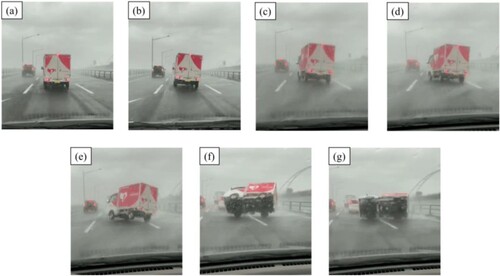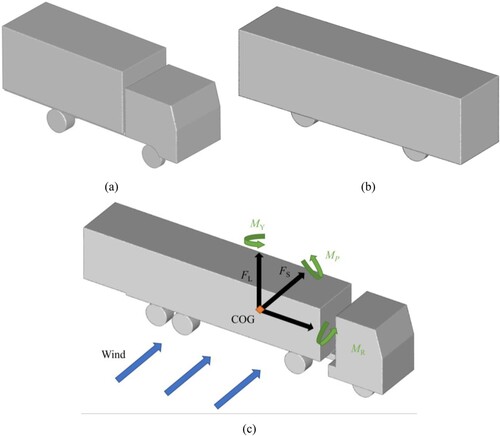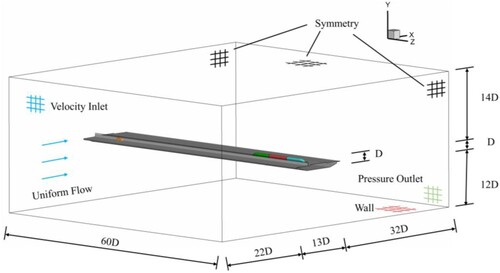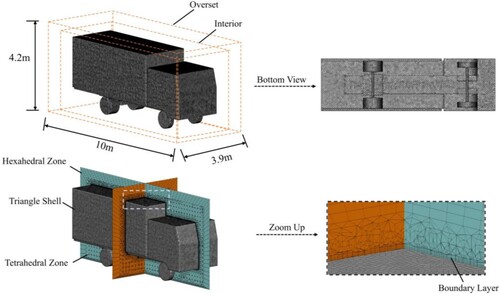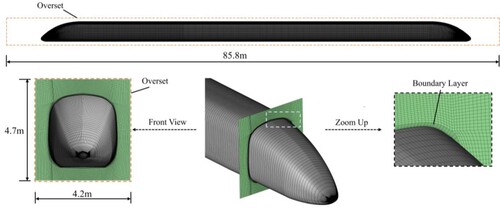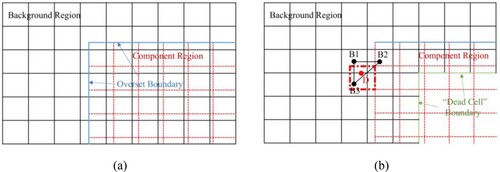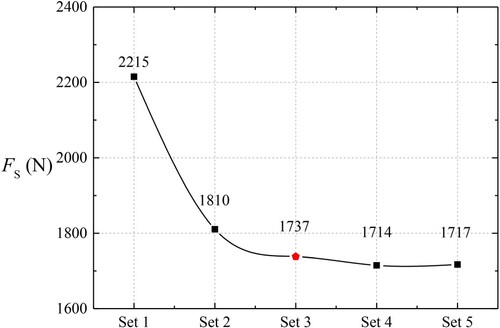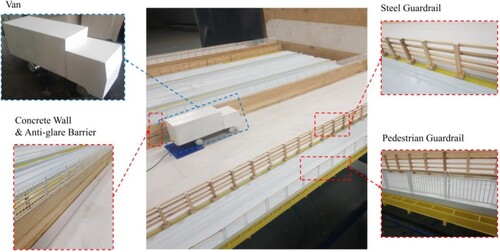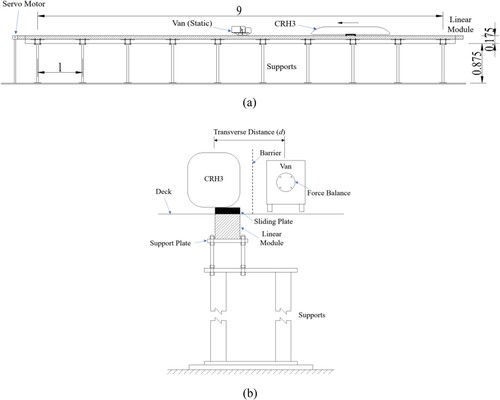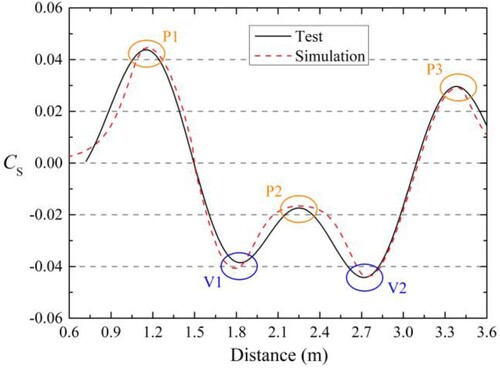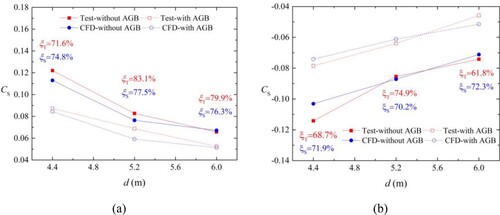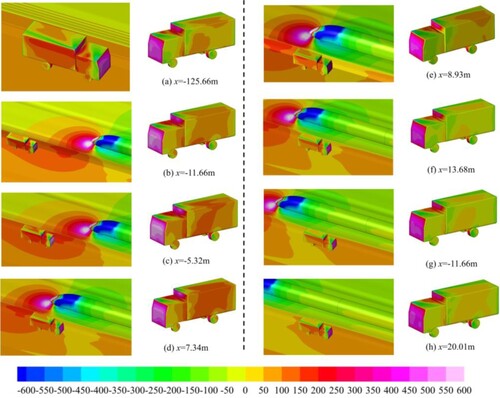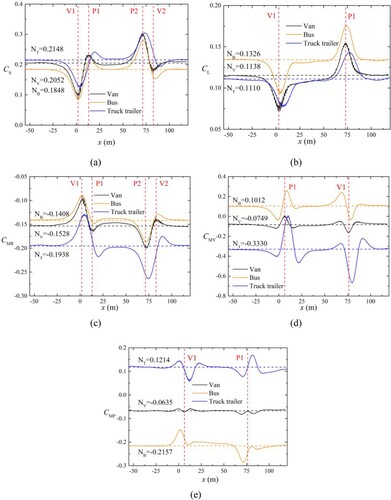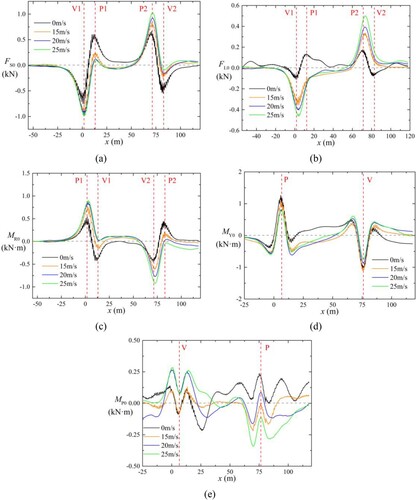Figures & data
Figure 2. Cross-section of Yibin Lingang Yangtze River Bridge (Unit: mm) (Wang & Saul, Citation2020).
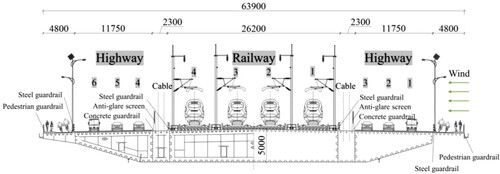
Figure 3. The configuration of the CRH3 model: (a) Scaled prototype from Schober et al. (Citation2010); (b) Numerical model in the present study.

Table 1. Geometrical information about the road vehicles.
Figure 6. Structural and non-structural hexahedral gird area: (a) calculation domain; (b) bridge deck.

Table 2. Grid information in the grid independence verification (Unit: million).
Table 3. Comparison between the wind tunnel test and simulation.
Figure 14. Vehicle models in the moving model tests: (a) Van; (b) Bus; (c) CRH3 (up) and cuboid train (down).
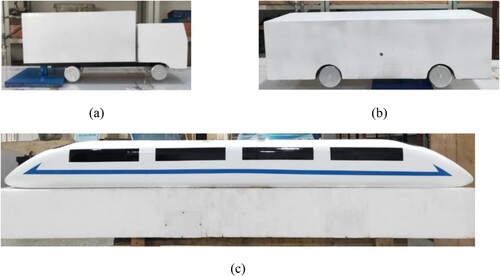
Table 4. Quantitative comparisons among the peak/valleyvalues.
Figure 17. Pressure distribution of sole-traveling vehicle: (a1) ∼ (a2) Pressure iso-value surface of 100 Pa; (b1) ∼ (b2) Pressure distribution on the vehicle-bridge system; (c1) ∼ (c2) Horizontal plane 1.5 m above the deck. (Unit: Pa).
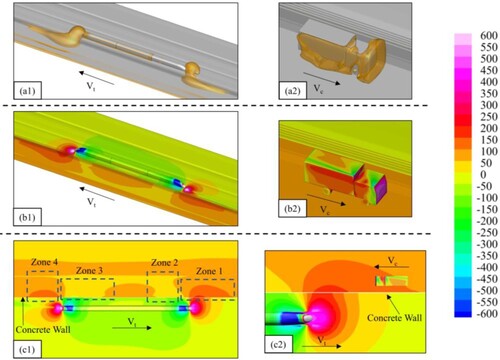
Figure 20. Aerodynamic coefficients of van on different lanes: (a) CS; (b) CL; (c) CMR; (d) CMY; (e) CMP.
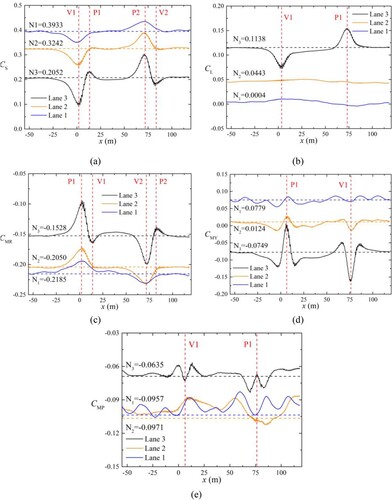
Table 5. Case details on different road lanes.
Table 6. Quantitative information for the aerodynamic forces of the van on different lanes.
Table 7. Case details for the influence on different road vehicles.
Table 8. Quantitative information of different vehicles (Unit: Force-N, Moment N·m).
Table 9. Case details of the superposition of crosswind and train-induced wind.
Table 10. Aerodynamic coefficients under different wind yaw angles.
Table 11. Peak/valley values and variation amplitudes at different wind speeds (Unit: kN, kN·m).

